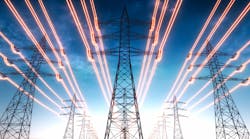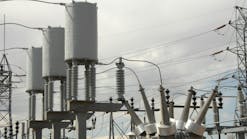A Look Back and Ahead on the Current 'State of Play' of Transmission Policy
Throughout 2021, policymakers, legislators, and regulators broadly recognized the need for a significant expansion of the nation’s transmission infrastructure driven by clean energy goals, an increasingly electrified economy, and the need for a more resilient electric grid. Indeed, estimates of the country’s transmission needs are eye-popping. Studies have shown that the United States will have to build out the grid by 60 percent by 2030, and may need to possibly triple it by 2050. To put that in a dollars and cents perspective, a recent report sponsored by WIRES estimated that $230 to $690 billion in investment in the nation’s transmission system will be needed by 2050 just to meet anticipated electrification needs alone. Accomplishing all of this will require a herculean effort.
In response to projections like these, in November 2021 Congress passed and the President signed into law the infrastructure Investment and Jobs Act (IIJA). The IIJA includes provisions such as a limited level of funding support for the development of high-voltage transmission capacity and modifications to strengthen the Department of Energy (DOE) and the FERC backstop siting authority. On the regulatory front, FERC initiated the transmission Advance Notice of Proposed Rulemaking (ANOPR) proceeding to consider whether there should be changes to the transmission planning, cost allocation, and generator interconnection processes to better meet the future needs of the grid. FERC is now sorting through hundreds of comments in response to the ANOPR and considering next steps.
While 2021 was a significant year for transmission policy, 2022 has the potential to be even more impactful. On the legislative front, Congress continues to consider additional legislation that would build upon the initial progress in the IIJA and include more investment to improve and expand long distance, high voltage transmission as part of the Build Back Better Act. While these legislative efforts send a strong signal of support for large scale regional and interregional transmission, they constitute only a small portion of the total transmission investment needed in the coming decades.
Instead, the real action in 2022 is likely to be on the regulatory, rather than the legislative, front. Already this year DOE announced its Building a Better Grid Initiative to implement the IIJA in conjunction with previously enacted authorities and funding. The goal of the DOE Initiative is to identify critical national transmission needs and support the buildout of long-distance, high-voltage transmission facilities to meet the critical national transmission needs through collaborative transmission planning, innovative financing mechanisms, coordinated permitting, and transmission related research and development.
In the meantime, look to FERC to follow up on its transmission ANOPR with a proposed rule (or rules) sooner rather than later. Indications are that the Commission wants to get a final rule (or rules) out by the end of the year – a highly ambitious timetable. The stakes are high. The issues FERC has teed up in the ANOPR are complex, and FERC has not tried to tackle major transmission policy reform in a meaningful way in more than a decade. Moreover, it seems all but certain that there will be disagreements among the Commissioners as to what direction FERC should take on transmission policy. A sharply divided transmission rule would likely invite judicial challenges and provide little policy certainty to the transmission owners and developers who will ultimately have to build the transmission infrastructure the country needs.
Separate and apart from the ANOPR, FERC has other avenues for spurring development of transmission infrastructure. Given the long lead time for getting transmission built and the large amount of capital investment required for transmission projects, adequate and durable transmission policies that consistently and emphatically send strong signals to promote needed transmission investment are crucial. Unfortunately, FERC’s track record on some of these critical matters has not been good. Proceedings related to transmission incentives and rate of return policy have been pending at FERC for many years, and there is a discouraging, and fairly longstanding, lack of consistency and agreement among the Commissioners on what direction to take. The simple fact is that when it comes to promoting investment in transmission, no policy is of greater import than the methods used to set rates of return on those investments. And to the extent additional incentives are needed to spur particular transmission development and construction activity, FERC must use its incentives authority to make it happen. Consistent, adequate rate of return and incentives policies will be indispensable to advancing the ball on transmission development.
It is now obvious the country will need the equivalent of a moonshot effort on transmission investment in order to meet the nation’s critical clean energy, electrification, and resilience needs within the coming decades. While some initial, and potentially helpful, steps were taken by Congress and regulators last year, as matters currently stand, we are not even close to building the electric transmission infrastructure needed to achieve these goals. Look to the steps taken in 2022 to see whether legislators and regulators are serious about meeting those needs or not.
Larry Gasteiger is executive director of WIRES.


